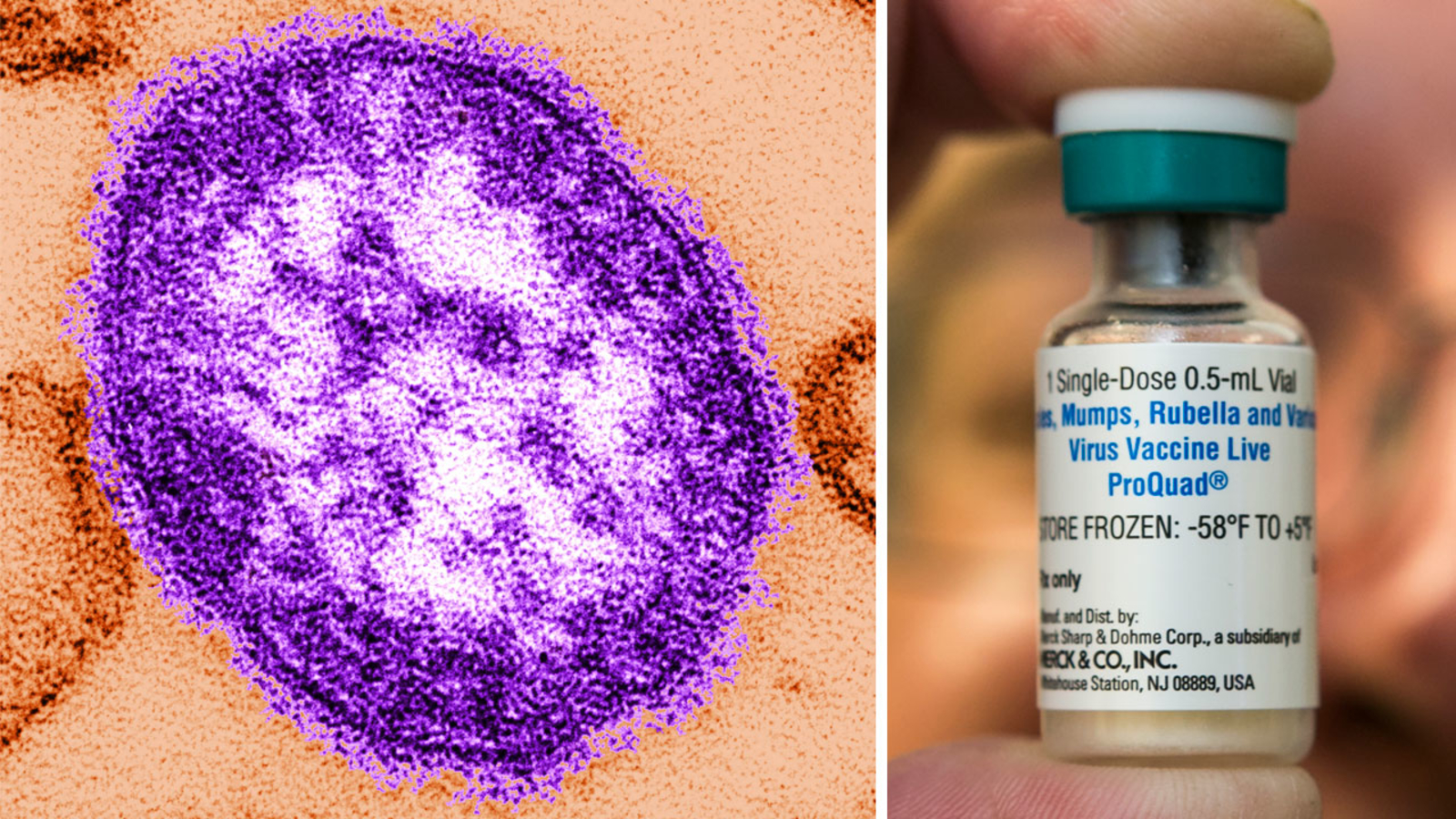More than 40 cases of measles in 17 states around the country have been reported to the Centers for Disease Control so far in 2024, including an outbreak that was recently identified in Chicago. Here’s what you should know about measles, its causes, and the symptoms to watch for.
What is measles?
Measles, also known as rubeola, is a highly contagious virus spread through direct contact or through the air. Though their symptoms are similar and they are prevented with the same combined MMR vaccine, measles/rubeola is different from rubella.
What are the symptoms of measles?
Somebody infected with measles will begin to experience a high fever, coughing, a runny nose and watery, red eyes between seven and 14 days after infection, according to the CDC.
Several days after symptoms begin to appear, patients may experience white spots inside their mouth. A rash then breaks out, beginning on the patient’s face and eventually spreading down the body. The rash initially appears as flat red spots but could also produce smaller raised bumps, and the spots may join as the rash spreads.
Measles-related deaths are usually caused by complications like diarrhea-related dehydration, respiratory infections and a brain-swelling infection called encephalitis, according to the World Health Organization.
How is measles treated?
According to the Centers for Disease Control, there is no antiviral treatment specifically for measles. Rather, medical treatment is “supportive and to help relieve symptoms and address complications such as bacterial infections” while the virus runs its course, and symptoms often subside after several days.
Getting the MMR vaccine within 72 hours of being exposed to measles may offer some protection against the disease, such as having a milder illness, according to the CDC.
Can measles be prevented?
The MMR vaccine prevents measles in addition to mumps and rubella. The CDC recommends that children receive two MMR vaccinations; one when they are 12-15 months old and another when they are 4-6 years old. There is also an MMR vaccine available for adults.
In the United States alone, there were as many as 4 million annual cases of measles prior to the start of the vaccination program in 1963. As many as 500 people died from the virus each year and another 48,000 were hospitalized, though the vaccination program has caused a more than 99 percent drop in cases, according to the CDC.
Despite the vaccine’s success in the United States, measles continues to be a threat in other parts of the world. The WHO estimates nearly 128,000 measles deaths worldwide in 2021. Most of the deaths occurred in unvaccinated or under-vaccinated children under the age of five.
Editor’s note: This story was originally published in 2018.
Copyright © 2024 KABC Television, LLC. All rights reserved.


